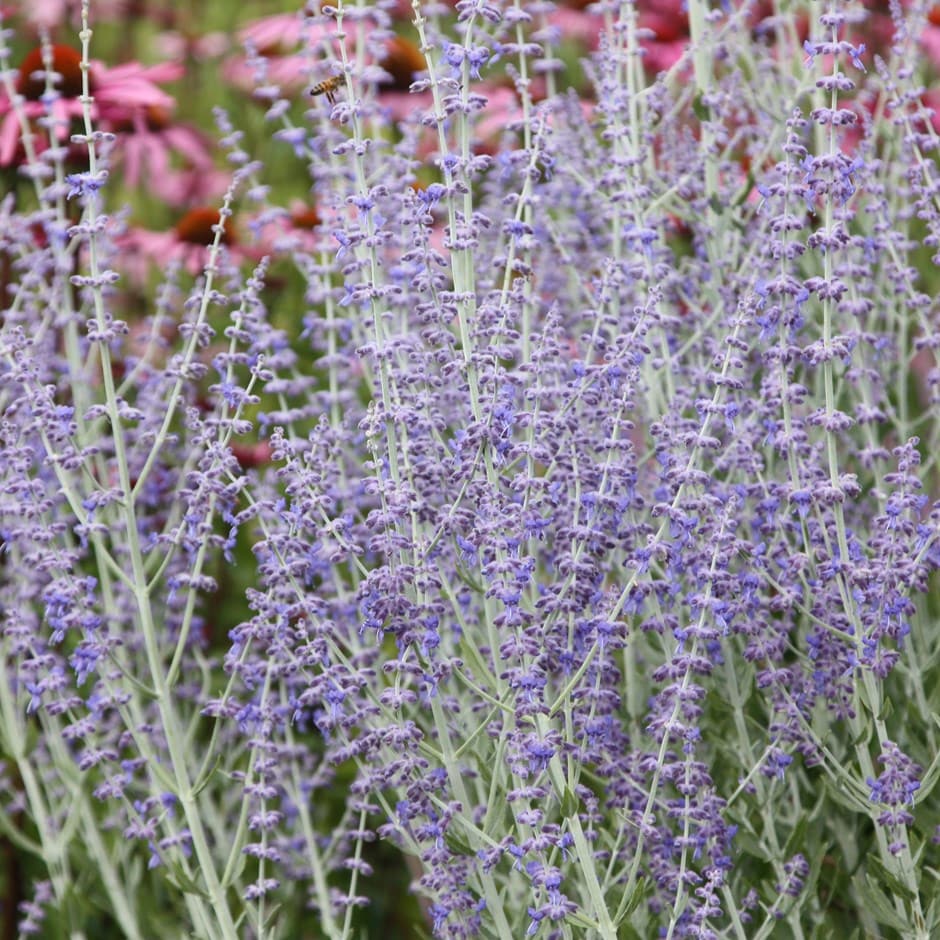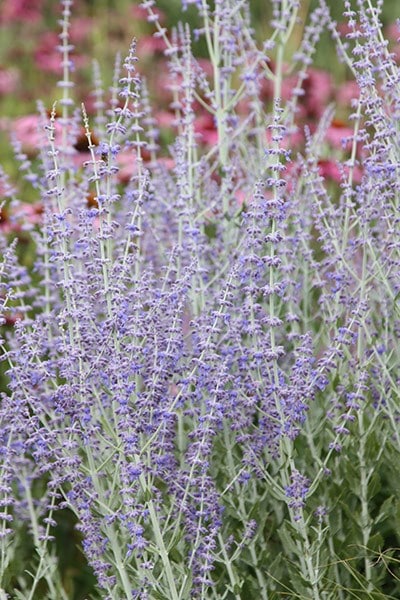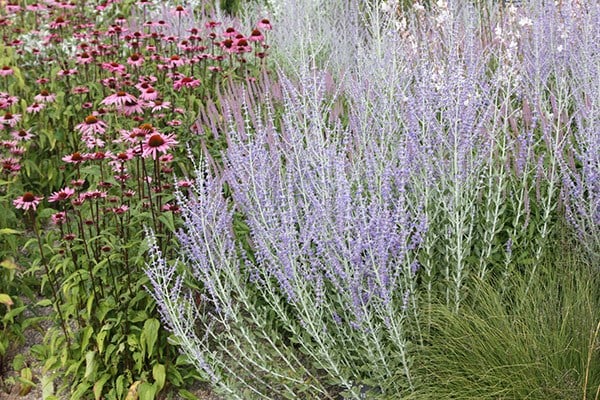Perovskia 'Little Spire' (PBR)
Russian sage
- 9cm pot
- £7.99
- In stock (shipped within 2-3 working days)
- 3 × 9cm pots
- £18.99 £6.33 each
- In stock (shipped within 2-3 working days)
Delivery options
- Standard £5.99
- Position: full sun
- Soil: well-drained, poor to moderately fertile
- Rate of growth: average
- Flowering period: August to September/li>
- Hardiness: fully hardy
With its aromatic, silver-grey leaves and upright spikes of tiny, violet-blue flowers, Russian sage makes a wonderful companion to all kinds of late-summer ornamental grasses and perennials.
Perovskia 'Little Spire' is one of the smaller cultivars, so is the best choice if space is limited or you find the taller forms get too floppy.
This deciduous sub shrub makes a real impact planted en masse next to a path, where the sage-like fragrance of its leaves can be appreciated, or try it alongside other silver-leaved plants, or in swathes in a sunny border. It can also cope with dry, chalky soils and coastal conditions.
Perovskia 'Little Spire' is one of the smaller cultivars, so is the best choice if space is limited or you find the taller forms get too floppy.
This deciduous sub shrub makes a real impact planted en masse next to a path, where the sage-like fragrance of its leaves can be appreciated, or try it alongside other silver-leaved plants, or in swathes in a sunny border. It can also cope with dry, chalky soils and coastal conditions.
Perovskia thrives in full sun and well-drained soil, making it ideal for Mediterranean-style or gravel gardens. This Russian Sage is drought-tolerant once established but overwatering or rich soil leads to weak growth and fewer flowers.
Avoid pruning back in autumn as winter seed heads provide interest and food for birds. In March, prune hard to 15-30cm (6-12in) from the ground to promote bushier growth and prevent flopping, then apply a 5-7cm (2-3in) layer of well-rotted compost or manure around the base, avoiding the stems.
Avoid pruning back in autumn as winter seed heads provide interest and food for birds. In March, prune hard to 15-30cm (6-12in) from the ground to promote bushier growth and prevent flopping, then apply a 5-7cm (2-3in) layer of well-rotted compost or manure around the base, avoiding the stems.


